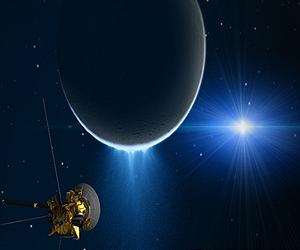|
 Star-gazing brings Vatican's chief astronomer 'closer to God'
Star-gazing brings Vatican's chief astronomer 'closer to God'Castel Gandolfo, Italy (AFP) May 4, 2010 Jesuit priest Jose Gabriel Funes, director of the Vatican's astronomic observatory, says star-gazing brings him closer to God. "I became an astronomer in order to get closer to God who created the universe," said Funes at the observatory in the vast park surrounding the pope's summer residence in Castel Gandolfo, near Rome. "We wonder the same things that our secular colleagues do - how does the universe work, how did it originate, are there planets similar to Earth?" said Funes, 47. Both F ... read more |
. |
|
|
Free Space, Earth, Energy And Military Newsletters - Delivered Daily |
| . | . |
| .. |
LRO Team Helps Track Laser Signals To Russian Rover Mirror Greenbelt MD (SPX) Apr 27, 2010
Greenbelt MD (SPX) Apr 27, 2010Using information provided by NASA's Lunar Reconnaissance Orbiter (LRO) instrument teams, researchers at the University of California San Diego have successfully pinpointed the location of a long lost light reflector left on the lunar surface by bouncing laser signals from Earth to the Russian Lunokhod 1 retroreflector. The initial imaging of the two Russian rovers, Lunokhod 1 and 2 were m ... more Planck Highlights The Complexity Of Star Formation  Paris, France (ESA) Apr 27, 2010
Paris, France (ESA) Apr 27, 2010New images from ESA's Planck space observatory reveal the forces driving star formation and give astronomers a way to understand the complex physics that shape the dust and gas in our Galaxy. Star formation takes place hidden behind veils of dust but that doesn't mean we can't see through them. Where optical telescopes see only black space, Planck's microwave eyes reveal myriad glowing str ... more Where Comets Emit Dust  Bonn, Germany (SPX) Apr 27, 2010
Bonn, Germany (SPX) Apr 27, 2010Studying comets can be quite dangerous - especially from close up. Because the tiny particles of dust emitted into space from the so-called active regions on a comet's surface can damage space probes. Scientists from the Max Planck Institute for Solar System Research in Germany have now developed a computer model that can locate these regions using only the information available from Earth ... more |
.. |
 Brain-Like Computing On An Organic Molecular Layer  Physicists Capture First Images Of Atomic Spin  Instant online solar energy quotes Solar Energy Solutions from ABC Solar |
.. |
|
|
Free Space, Earth, Energy And Military Newsletters - Delivered Daily |
|
|
. |
 Cassini Measures Tug Of Enceladus
Cassini Measures Tug Of EnceladusPasadena CA (JPL) Apr 27, 2010 NASA's Cassini spacecraft will be gliding low over Saturn's moon Enceladus for a gravity experiment designed to probe the moon's interior composition. The flyby, which will take Cassini through the water-rich plume flaring out from Enceladus's south polar region, will occur on April 27 Pacific time and April 28 UTC. At closest approach, Cassini will be flying about 100 kilometers (60 miles) above the moon's surface. Cassini's scientists plan to use the radio science instrument to measure the ... read more |
| The contents herein, unless otherwise known to be public domain, are Copyright 1995-2010 - SpaceDaily. AFP and UPI Wire Stories are copyright Agence France-Presse and United Press International. ESA Portal Reports are copyright European Space Agency. All NASA sourced material is public domain. Additional copyrights may apply in whole or part to other bona fide parties. Advertising does not imply endorsement, agreement or approval of any opinions, statements or information provided by SpaceDaily on any web page published or hosted by SpaceDaily. Privacy statement |
| Previous Issues | May 04 | May 03 | Apr 30 | Apr 29 | Apr 28 |